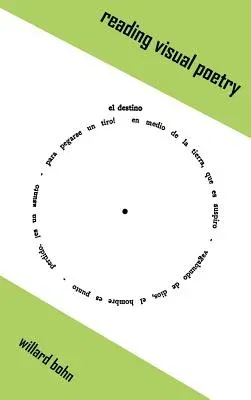Visual poetry can be defined as poetry that is meant to be seen.
Combining painting and poetry, it attempts to synthesize the principles
underlying each discipline. Visual poems are immediately recognizable by
their refusal to adhere to a rectilinear grid and by their tendency to
flout their plasticity. In contrast to traditional poetry, they are
conceived not only as literary works but also as works of art. Although
they continue to provide visual cues that aid in deciphering the text,
they function simultaneously as visual compositions. Whether the visual
elements form a rudimentary pattern or whether they constitute a highly
sophisticated design, they transform the poem into a picture. Reading
Visual Poetry examines works created in Spain, Latin America, France,
Italy, Brazil, and the United States. While it attempts to recreate the
historical and cultural context surrounding each of the works in
question, it is conceived primarily as a series of readings-or rather as
a series of readings about reading. This book seeks to interpret a
number of poems, which, despite their apparent simplicity, can be
difficult to decipher. It explores the process of interpretation itself,
which, like the compositions, can be surprisingly complex.

